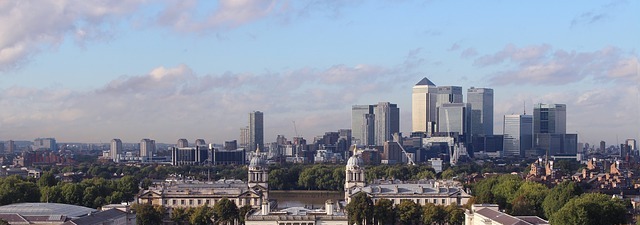Central business district (CBD)
A central business district (CBD) is the commercial and business centre of a city, often referred to as the ‘financial district’. Although many cities share their CBD with the ‘city centre’, the concepts differ, since the latter is the area of a city where significant commerce, political, cultural and power is concentrated.
CBDs traditionally developed in historic cities as the market square where there would be trade and other business activities. This would typically be in the geographic centre of the a settlement. However, as cities grew and became more populous, CBDs became a more fixed location where retail and commerce took place, often in an area away from the centre, in what are sometimes termed ‘edge cities’, e.g. Canary Wharf in London (top image).
This distance from the centre of a city to a CBD can be due to strong preservation laws and maximum building height restrictions that seek to preserve the historic character of the centre, e.g. Paris and Vienna. In the 21st century megacities of Asia, it is quite common for there to be several CBDs located across an urban area.
Some of the key characteristics of CBDs include:
- High concentration of offices, banks, financial institutions, and so on.
- High density and high-rise buildings.
- High land values.
- Lack of open and/or green space.
- Department stores and high-end shops.
- Multi-storey car parks.
- Well-managed infrastructure links with other parts of the city.
- Lack of people outside of business hours and at weekends.
- High concentration of pedestrians.
[edit] Related articles on Designing Buildings Wiki
Featured articles and news
A change to adoptive architecture
Effects of global weather warming on architectural detailing, material choice and human interaction.
How big is the problem and what can we do to mitigate the effects?
Overheating guidance and tools for building designers
A number of cool guides to help with the heat.
The UK's Modern Industrial Strategy: A 10 year plan
Previous consultation criticism, current key elements and general support with some persisting reservations.
Building Safety Regulator reforms
New roles, new staff and a new fast track service pave the way for a single construction regulator.
Architectural Technologist CPDs and Communications
CIAT CPD… and how you can do it!
Cooling centres and cool spaces
Managing extreme heat in cities by directing the public to places for heat stress relief and water sources.
Winter gardens: A brief history and warm variations
Extending the season with glass in different forms and terms.
Restoring Great Yarmouth's Winter Gardens
Transforming one of the least sustainable constructions imaginable.
Construction Skills Mission Board launch sector drive
Newly formed government and industry collaboration set strategy for recruiting an additional 100,000 construction workers a year.
New Architects Code comes into effect in September 2025
ARB Architects Code of Conduct and Practice available with ongoing consultation regarding guidance.
Welsh Skills Body (Medr) launches ambitious plan
The new skills body brings together funding and regulation of tertiary education and research for the devolved nation.
Paul Gandy FCIOB announced as next CIOB President
Former Tilbury Douglas CEO takes helm.
UK Infrastructure: A 10 Year Strategy. In brief with reactions
With the National Infrastructure and Service Transformation Authority (NISTA).
Ebenezer Howard: inventor of the garden city. Book review.
Airtightness Topic Guide BSRIA TG 27/2025
Explaining the basics of airtightness, what it is, why it's important, when it's required and how it's carried out.























Comments